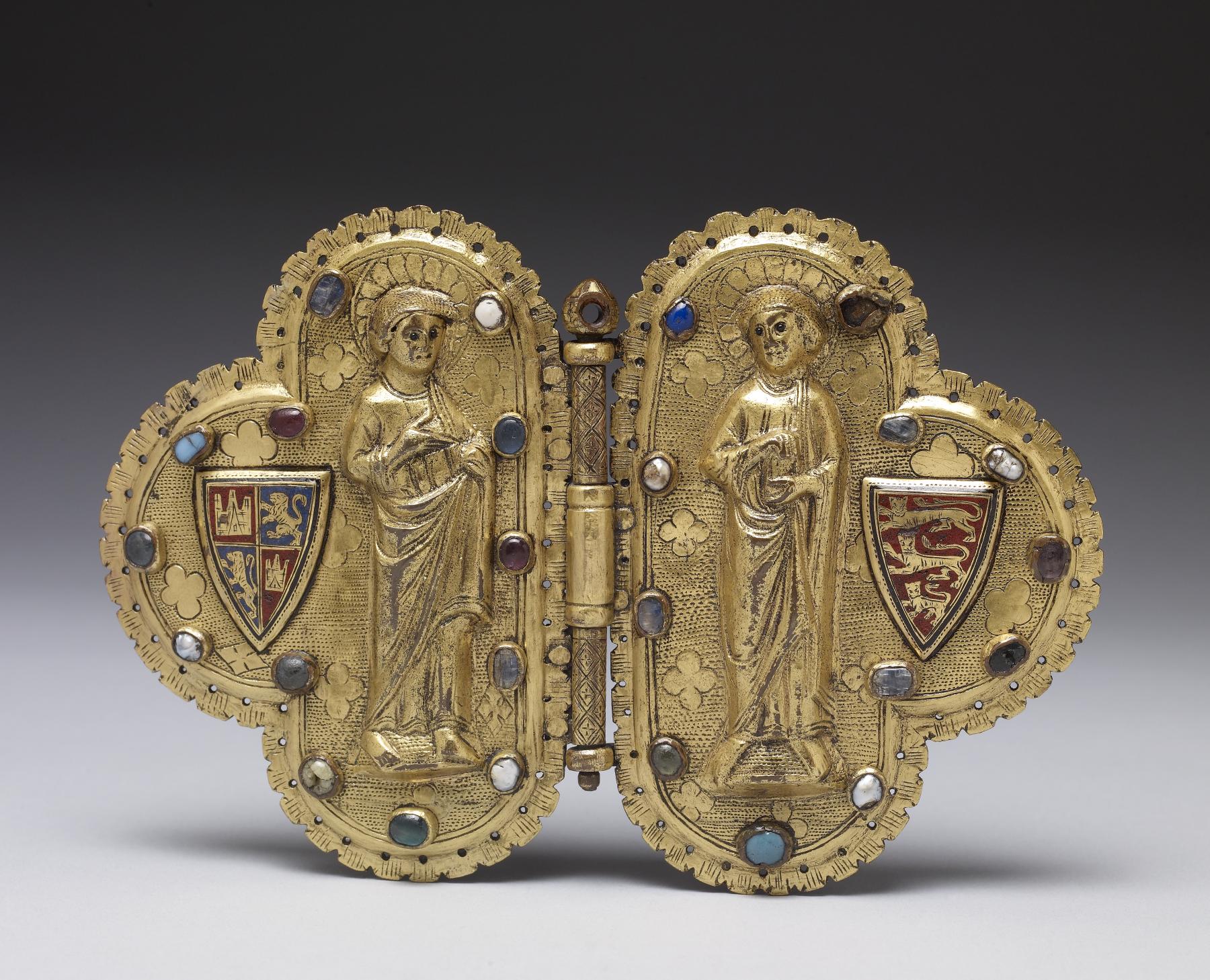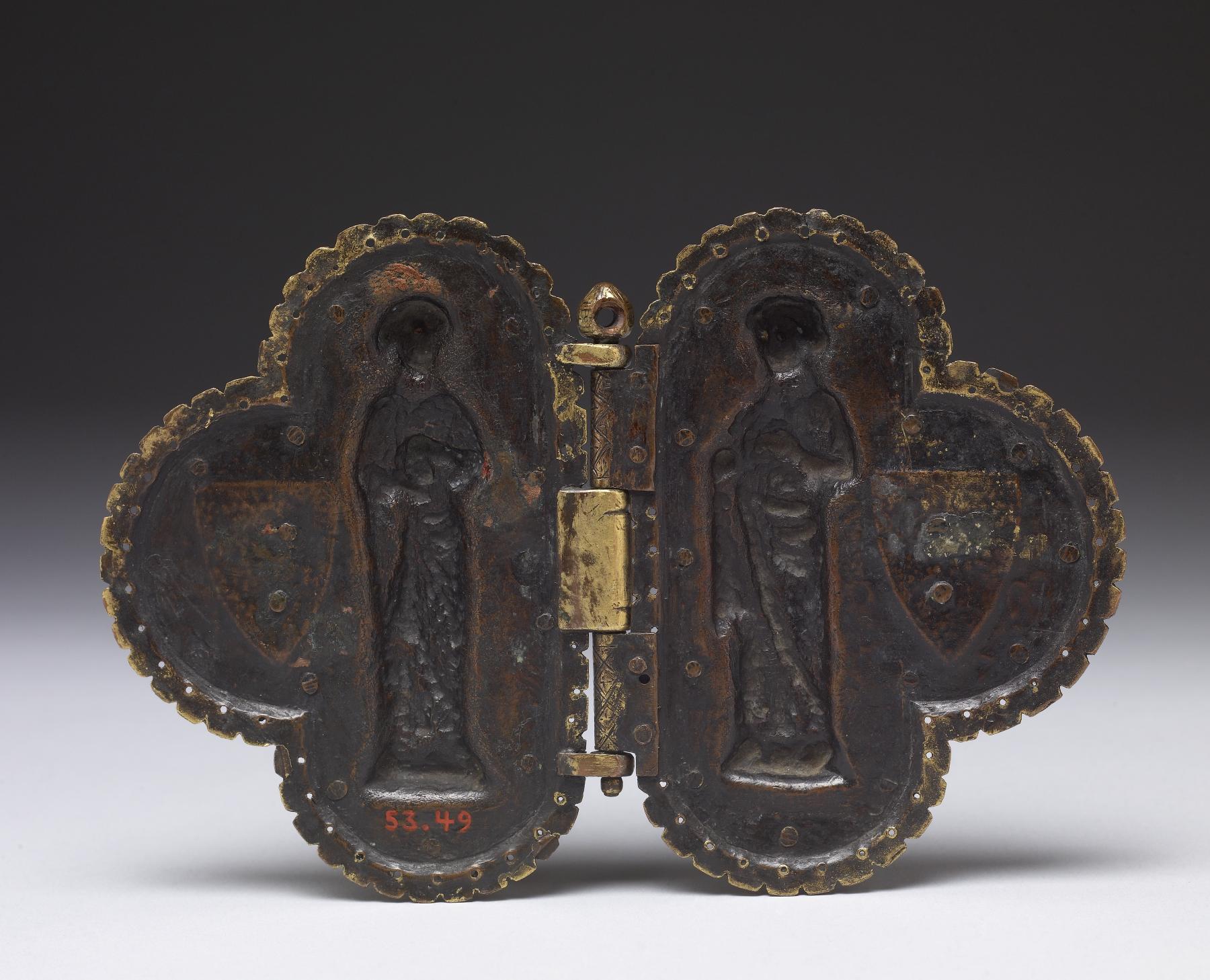Morse with Apostles and Heraldic Shields
(Medieval Europe )
This morse, or clasp, was once sewn onto a bishop's cope (ceremonial robe). The two heraldic shields, added later, represent the arms of Léon and Castile (left) and England (right). These shields suggest that the clasp was adapted for use on a luxurious cape worn by either Eleanor of Castile (d. 1290) or her husband, King Edward I of England (d. 1307).
Provenance
Provenance (from the French provenir, 'to come from/forth') is the chronology of the ownership, custody, or location of a historical object. Learn more about provenance at the Walters.
Frédéric Spitzer, Paris, by purchase; Sale, Paul Chevallier and Charles Mannheim, April 17, 1893, no. 276; Caspar Bourgeois and Stephen Bourgeois, Cologne; Bourgeois Sale, Cologne, October 19, 1904, no. 395; Henri Daguerre, Paris; Henry Walters, Baltimore, 1924, by purchase; Walters Art Museum, 1931, by bequest.
Exhibitions
| 1961 | A Medieval Treasury from Southern Collections. Ackland Art Center, University of North Carolina at Chapel Hill, Chapel Hill. |
Conservation
| Date | Description | Narrative |
|---|---|---|
| 11/8/1983 | Treatment | cleaned |
Geographies
France, Limoges (Place of Origin)
Measurements
4 1/2 x 6 3/4 in. (11.5 x 17.2 cm)
Credit Line
Acquired by Henry Walters, 1924
Location in Museum
Accession Number
In libraries, galleries, museums, and archives, an accession number is a unique identifier assigned to each object in the collection.
In libraries, galleries, museums, and archives, an accession number is a unique identifier assigned to each object in the collection.
53.49






